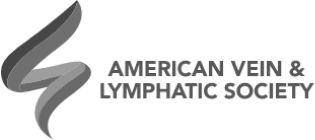















Elizabeth Coll, DNP, RVT - Posted on August 4, 2023
At Chuback Vein Center, your health and well-being are our top priority. Welcome to the first installment of our series on vein disease and leg health, where we delve into crucial topics to keep you informed and safe. In our first article, we tackle a serious but less common complication of varicose veins: rupture and bleeding.
One of the less common, but more serious, complications of varicose veins that we treat in our center is rupture and bleeding. Spontaneous rupture of varicose veins is a frightening event that can lead to significant blood loss. Patients who take blood thinners for other medical problems are at higher risk of serious bleeding from ruptured veins. Death related to hemorrhage from ruptured varicose veins, while rare, is well documented in the medical literature.
Why do veins rupture and bleed?
In normal circulation, leg veins have one-way valves that open to allow blood to return to the heart and close to prevent backflow. Vein disease develops when the valves fail to close. This backflow, or reflux, stretches the veins, causing them to bulge and become visible on the surface. The result is varicose veins.
As vein disease progresses, high pressure created by reflux causes more and more veins to dilate, often appearing as blue veins and “spider veins” on the surface around the lower leg and ankle. If the vein is very close to the surface, the slightest injury can cause the vein to rupture and bleed outside of the body. Common causes of injury include sloughing off dry, irritated skin, bumping into a table, bed frame, or other sharp object, or shaving with a razor. Most patients experience rupture when they are bathing, as warm water dilates the veins even further. A washcloth, towel, or razor can disrupt the thin layer of skin on the surface, and bleeding can occur.
What should you do if you are bleeding from a varicose vein?
Remain calm. Your initial instinct may be to run to your phone to call 911, but standing, walking, or running makes the bleeding worse. Patients typically report that “blood was shooting out from my leg,” and they often describe the scene afterward as looking like “an ax murder happened in my bathroom.” Don't panic. Don't run around. Don't apply a tourniquet.
A 72 year old woman with recent rupture and bleeding.
Here's what you should do...
Patients often go to the emergency room when they have an episode of rupture and bleeding. Typically, the ER provider will place a stitch in the area or apply a firm “pressure dressing” and advise you to follow up with a New Jersey vein doctor the next day for treatment of the bleeding vein.
At Chuback Vein Center, we see many patients who have experienced rupture and bleeding. Fortunately, these “culprit veins” can be safely injected with medication in our office using a procedure called sclerotherapy.
Sclerotherapy is an injection of a chemical irritant into the bleeding vein that closes the vein on the inside and prevents recurrent bleeding. It is virtually painless. After the injection, a compression dressing or stocking is applied. You should keep it in place for the next couple of days.
What can you do to prevent rupture and bleeding?
Keep your skin healthy and well moisturized. Prevent dryness and flaking by applying a daily moisturizer made for sensitive skin, such as Aveeno, Cerave, or Curel. Moisturizer is best applied immediately after bathing while your skin is still slightly damp. Make sure to apply it to your legs, ankles, and feet.
Avoid shaving with a razor over prominent varicose veins or spider veins.
Wear support socks or compression stockings during the day or when you are driving long distances or flying.
Let Chuback Vein Center treat your veins before they become an issue. Injection sclerotherapy can eliminate veins at risk of rupture and bleeding before it occurs. Varicose veins, blue veins, and spider veins can be treated with minimally invasive procedures to eliminate reflux and high pressure, keeping you and your legs safe and healthy.
If you have questions about vein health or topics that you would like to learn more about, feel free to reach out to me at [email protected]
Elizabeth Coll, DNP, RVT, is a board-certified Nurse Practitioner and Registered Vascular Technologist at Chuback Vein Center. She has 20 years of experience treating vein disease, lymphedema, and wounds.
We invite you to become a part of the Chuback Vein Center family. We are confident in our ability to restore your health and wellness.